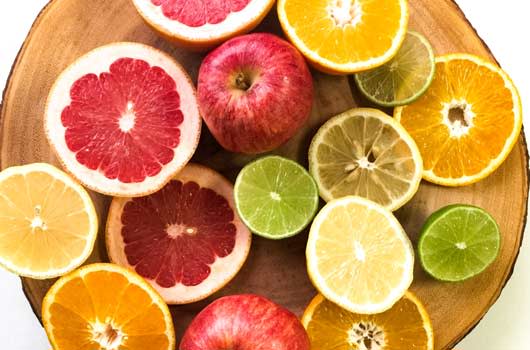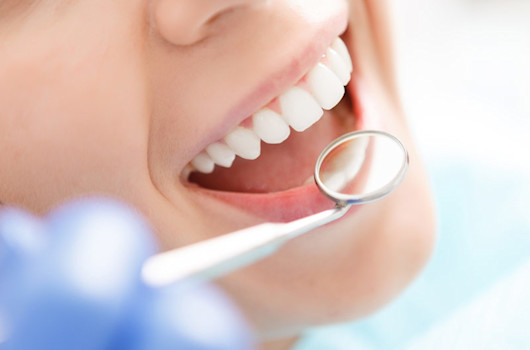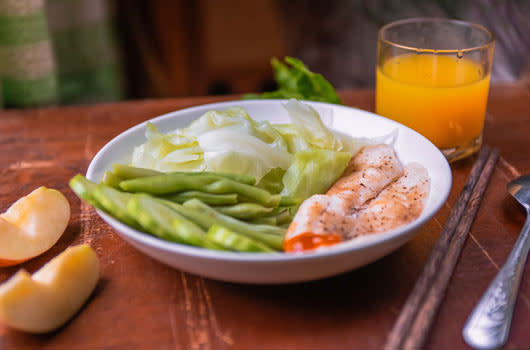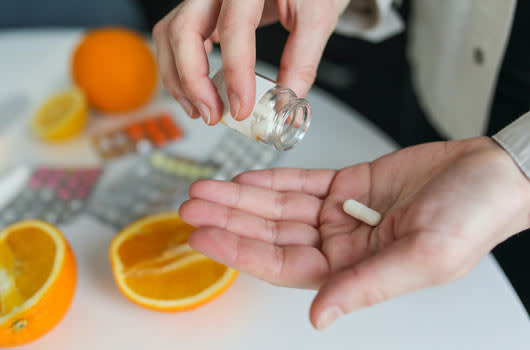Vitamin C: The Definitive Guide
Vitamin C: The definitive guide
Vitamin C, or ascorbic acid, is one of the most popular and talked about vitamins of them all, and has been crowned the cold healer for as long as we can remember. However, there is much more to vitamin C than many of us are aware. Its broad range of benefits probably explains why almost 40% of the UK population take a vitamin C supplement1.
- What is vitamin C?
- What are the benefits?
- Immunity and vitamin C
- Skin and oral health
- Cognition and brain health
- Iron absorption
- How can I get enough vitamin C?
- How do I know if I'm deficient
- How much is needed and can I take too much
- Summary
What is vitamin C?

Ascorbic acid was first extracted from pepper and adrenal gland extracts by Albert Szent-Gyorgyi in 1928, and shown to be the antiscorbutic factor (that is, to be able to prevent scurvy) in 1932. Long before that, in the XVIII century, James Lind had shown that scurvy could be cured by citrus fruits, although he didn’t know about vitamin C at that time2.
Humans, along with other primates and guinea pigs, are unable to synthesise vitamin C in the body, and rely solely on vitamin C from the diet.
Chemically speaking, vitamin C is an electron donor, or reducing agent, which means it can pass its electrons to oxidised molecules. Because of this, vitamin C is generally considered an antioxidant compound3.
Its reversible oxidation capacity makes vitamin C a powerful protector against free radicals. Free radicals are unstable molecules that at high levels can damage the cells in your body. It also acts as a cofactor or ‘helper molecule’ to several enzymes, involved in multiple pathways such as collagen formation, hormone regulation and energy production3.
What are the benefits of vitamin C?
Epidemiological studies show that people with vitamin C deficiency have a higher mortality rate than control groups4. There are many reasons why this may be the case, which highlights the multiple and essential functions that vitamin C performs in the body.
Immune System
Vitamin C has been crowned the cold healer for as long as we can remember. We owe that concept to the successful double Nobel laureate Linus Pauling, who in the 1970s promoted a high daily dose of vitamin C to aid colds and prevent chronic disease.
While research doesn’t support the notion that high doses of vitamin C prevents colds, its essential role in helping the immune system is well established.
Vitamin C contributes to immune defense at multiple levels5.
- Physical barrier against pathogens (foreign particles that can cause disease): vitamin C is needed for a healthy skin (see Skin and oral health section), as well as for wound healing. Preventing the entrance of pathogens in the body is one of the best immune defenses.
- Phagocytic cell: a [phagocyte is a type of cell that has the ability to ingest, and sometimes digest, foreign particles. Vitamin C can improve motility of phagocytes and enhance phagocytosis, therefore facilitating the killing of microbial pathogens.
- Lymphocytes are white blood cells that are also one of the body's main types of immune cells. Vitamin C has been shown to enhance differentiation and proliferation of both B- and T-cells, the major cellular components for immune response, needed to respond to infections.
- Modulation of inflammatory mediators: vitamin C has been shown to help modulate production of cytokines (the messengers of the immune system) and to decrease histamine levels.
Vitamin C is also involved in the synthesis of catecholamine hormones such as norepinephrine, which are needed for the cardiovascular response to severe infection4.
Skin and oral health

Common symptoms of scurvy include delayed healing of skin wounds, skin bruising due to broken capillary vessels and loosening of teeth. All these symptoms result from weakened collagen, which then leads to weak connective tissues, as collagen provides structural strength to the connective tissue.
Vitamin C is necessary to modify pro-collagen (the molecule that will form collagen) into collagen, by helping the formation of a stable triple helix of collagen. This process is called hydroxylation. Without hydroxylation, synthesis of pro-collagen seems to decrease, as well as being degraded faster6.
Even if we might not think so, our skin contains high concentrations of vitamin C, at similar levels seen in other tissues such as the liver or heart. As well as its role in collagen formation, vitamin C in the skin is part of the antioxidant defense system. It’s thought that vitamin C can help to reduce oxidative stress damage in the skin, especially from overexposure to UV light, which can lead to sunburn6.
Another typical symptom of scurvy is the swelling and bleeding of gums, a condition known as “scorbutic gingivitis”. As collagen is required to form the connective tissues that support the dental gums and keep teeth in place. The weakening of collagen due to vitamin C deficiency will lead to weakened gums. It has been reported that vitamin C deficiency correlates with higher dental infections7.
Cognition and brain health
Our brains are always active, and it’s the organ that generally uses most of our energy and oxygen. Because of this rapid metabolism, the brain generates a lot of free radicals (unstable molecules that can cause damage to cells at high concentrations). There are not many protective antioxidant mechanisms in the brain, which makes this tissue particularly susceptible to oxidative stress.
The brain tissue depends on high levels of antioxidant molecules to maintain the balance, and Vitamin C is found to be the most abundant8. Aging and development of neurodegenerative disorders are associated with increased levels of oxidative stress. Research shows that antioxidants such as vitamin C are necessary to maintain the redox balance9. Vitamin C is needed to make dopamine, an important neurotransmitter in the brain, usually known as the “feel-good” neurotransmitter.
Iron absorption

In foods, iron is present in heme and non-heme form: heme iron is found in animal tissues, whereas non-heme iron comes primarily from plant sources such as grains and vegetables. While most of the iron we eat is in non-heme form, it’s not absorbed as well by the body as heme-iron. People that exclude animal products from their diets, such as vegetarians or vegans, may have a high intake of iron, but it’s unlikely that they absorb it very well10.
Vitamin C has been shown to improve absorption of non-heme iron, in part by acting as a weak chelator (sequestering iron) to help to solubilize iron in the intestine11. It is therefore very important for people that don’t eat meat to include vitamin C in their meals to improve iron absorption.
Recent data also shows that vitamin C is necessary for maintaining iron homeostasis (the ability to maintain internal stability), in the different tissues in the body, such as the intake of iron by blood cells12.
How can I get enough vitamin C?
Vitamin C is a water-soluble vitamin. These are not stored in the body, which means that we have to have regular intake to replenish the levels in the body. Vitamin C comes from eating a healthy balanced diet or, can be taken as a dietary supplement.
Vitamin C is abundant in many fruits and vegetables. Some of the best sources, as listed by Harvard Health include:
- Citrus (oranges, kiwi, lemon, grapefruit)
- Bell peppers
- Strawberries
- Tomatoes
- Cruciferous vegetables (broccoli, brussel sprouts, cabbage, cauliflower)
- White Potatoes
It’s important to remember that vitamin C can be destroyed by heat and light, so, if possible, make sure you eat raw and fresh fruits and vegetables that are raw and fresh., Because vitamin C is water-soluble, its goodness will be lost in boiling water, so try to steam your vegetables or reduce the cooking time.
How do I know if I'm deficient in vitamin C?
Clinical vitamin C deficiency is rare nowadays in developed countries. When it happens, it is linked to special cases such as malnutrition, malabsorption syndromes, kidney disease, or people that suffer drug or alcohol abuse.
Smokers are a particular risk group due to the oxidative stress that tobacco and nicotine put in the body. It’s estimated that active smoking depletes 25-50% of the vitamin C pool in the body, while passive smoking results in a drop of about half of that13.
Harvard Health lists signs of deficiency as being:
- Scurvy, the hallmark disease of severe vitamin C deficiency, displays symptoms resulting from loss of collagen that weakens connective tissues:
- skin spots caused by bleeding and bruising from broken blood vessels
- swelling or bleeding of gums, and eventual loss of teeth
- hair loss
- delayed healing of skin wounds
- Fatigue, malaise
- Iron-deficiency anaemia, due to decreased absorption of non-heme iron
Most of us won’t ever experience these symptoms, as our diets provide our bodies with enough vitamin C. Plus, our bodies are very efficient at reabsorbing and re-distributing vitamin C where it’s needed.
How much vitamin C do I need?
With fruits and vegetables being such a good source of vitamin C, obtaining the recommended daily amount through the diet should be quite easy: adults should aim at 80mg of vitamin C per day14.
Nevertheless, there is the debate around whether our recommended intake of vitamin C should be higher. Our current lifestyle has been linked to high oxidative stress status and chronic inflammation, which can stress our antioxidant mechanisms. It has been suggested that the Western diet, rich in highly processed products and sugar, can affect the absorption of ascorbic acid by the body8.
Can I take too much vitamin C?
The short answer is yes. Some supplements contain high doses of vitamin C, and it can be easy to consume large amounts.
Doses of up to 1 gram of vitamin C via supplements, in addition to the normal intake from the diet, are fine. Higher doses however, can lead to gastrointestinal issues like stomach pain, flatulence or diarrhoea.
The absorption of vitamin C is dose dependent: this means that your body will only take vitamin C if it needs it. If your vitamin C levels are adequate, you won’t absorb much and it will be eliminated in the urine. Ther absorption is also saturated at high doses: this means that once you go over a certain dose, you will only absorb a very small amount and the rest will be flushed in the urine3.
Vitamin C supplements

There are plenty of fruits and vegetables that have vitamin C, and most of us don’t need to take supplements. However, vitamin C supplements can help to supplement your intake of vitamin C if you think you don’t get enough from the diet. At times, when your body is under stress, your vitamin C status in the organs can also be affected.
Some supplements contain extremely high doses of ascorbic acid, which can lead to stomach issues in sensitive people.
Your body will only take as much as it needs and secrete the rest, so you are better off taking a small amount everyday instead of a massive dose every so often15.
The majority of vitamin C supplements are just made with ascorbic acid. If you are looking for a natural source of vitamin C, supplements made with acerola cherry might be the solution. Acerola cherry (Malpighia glabra L., or Malpighia emarginata DC.), also known as Barbados or West Indian cherry, is well known for its high natural content of vitamin C16.
One study reported that vitamin C from acerola juice was better absorbed than vitamin C from an ascorbic acid solution17. Be aware though that some acerola supplements will have a higher amount of vitamin C than the natural source due to the external addition of ascorbic acid.
Vitamin C and COVID-19
Vitamin C has been in the spotlight recently due its potential role in treating or preventing COVID-19. Caused by infection of the virus known as Sars-cov-2, COVID-19 is now a global pandemic that continues to affect all aspects of our lives.
The main fatality factor for COVID-19 is acute respiratory distress syndrome: a significant increased oxidative stress due to rapid release of free radicals and cytokines that leads to cellular injury, organ failure and eventually death18.
From early on, there have been reports of hospitals treating COVID-19 patients with high doses of vitamin C intravenously. Vitamin C had already been researched in the context of patients with sepsis19, as well as patients in intensive care units (ICU) suffering with infections and bronchoconstriction. Data from a meta-analysis is 2019 suggests that administration of high doses of vitamin C intravenously might reduce the stay of patients by up to 8%20. Although 8% might not look like much, it can make a difference when hospital resources are stressed.
Clinical trials are currently on-going to assess the effect of intravenous vitamin C administration21. While we still don’t know if it could be an effective treatment, it looks like it could be a promising adjuvant (used alongside other products) to future therapies.
Vitamin C oral supplementation will not prevent you from getting COVID-19; until a vaccine becomes available, the most effective way to not getting infections is washing hands, not touching your face, and social distancing. There are currently no approved treatments for COVID-19, although many researchers around the world are studying different medicines for its potential effectiveness.
Having optimal levels of vitamin C, along with other essential nutrients like vitamin D, is important to maintain your immune system in top form. If your immune system is working as well as it should be, then you’ll be in a better position to bounce back from any infection.
Summary
Vitamin C is an essential vitamin for our body, not only in helping our immune system, but also to keep our skin and teeth healthy, to make sure we absorb iron better, and to keep our brain working properly.
Vitamin C can be taken via a quality nutritional food supplement or by a whole range of fresh fruits and vegetables, whatever works best for you.
References
1. HFMA Health of the Nation Survey 2019. Food Manufacturers Association. 6th Health of the Nation Survey.
2. Lind J, Stewart CP, Guthrie D. Lind’s Treatise on scurvy: A bicentenary volume containing a reprint of the first edition of a Treatise of the scurvy. Edinburgh: University Press, 1953. Print (7th ed).
3. Padayatty SJ, Levine M. Vitamin C: the known and the unknown and Goldilocks. Oral Dis. 2016; 22(6):463-493
4. Simon JA, Hudes ES, Tice JA. Relation of serum ascorbic acid to mortality among US adults. J Am Coll Nutr. 2001; 20(3):255-263.
5. Carr AC & Maggini S. Vitamin C and immune function. Nutrients. 2017; 9(11):1211
6. Pullar JM, Carr AC, Vissers MCM. The roles of vitamin C in skin health. Nutrients. 2017; 9(8):866
7. Kaur G, Kathariya R, Bansal S, Singh A, Shahakar D. Dietary antioxidants and their indispensable role in periodontal health. J Food Drug Anal. 2016; 24(2):239-246.
8. Kaźmierczak-Barańska J, Boguszewska K, Adamus-Grabicka A, Karwowski BT. Two faces of vitamin C - antioxidative and pro-oxidative agent. Nutrients. 2020; 12(6):1501.
9. Covarrubias-Pinto A, Acuña AI, Beltrán FA, Torres-Díaz L, Castro MA. Old things new view: ascorbic acid protects the brain in neurodegenerative disorders. Int J Mol Sci. 2016; 16(12):28194-28217.
10. Hunt JR. Bioavailability of iron, zinc, and other trace minerals from vegetarian diets. Am J Clin Nutr. 2003; 78(3 Suppl):633S-639S.
11. Abbaspour N, Hurrell R, Kelishadi R. Review on iron and its importance for human health. J Res Med Sci. 2014; 19(2):164-174.
12. Lane DJ, Richardson DR. The active role of vitamin C in mammalian iron metabolism: much more than just enhanced iron absorption! Free Radic Biol Med. 2014;75:69-83.
13. Lykkesfeldt J, Tveden-Nyborg P. The pharmacokinetics of vitamin C. Nutrients. 2019; 11(10):2412.
14. EFSA NDA Panel (EFSA Panel on Dietetic Products, Nutrition and Allergies), 2013. Scientific Opinion on Dietary Reference Values for vitamin C. EFSA Journal. 2013; 11(11):3418, 68pp.
15. Carr AC, Vissers MC. Synthetic or food-derived vitamin C - are they equally bioavailable? Nutrients. 2013; 5(11):4284-4304.
16. Prakash A, Baskaran R. Acerola, an untapped functional superfruit: a review of latest frontiers. J Food Sci Technol. 2018; 55(9):3373-3384.
17. Uchida E, Kondo Y, Amano A, Aizawa S, Hanamura T, Aoki H, Nagamine K, Koizumi T, Maruyama N, Ishigami A. Absorption and excretion of ascorbic acid alone and in acerola (Malpighia emarginata) juice: comparison in healthy Japanese subjects. Biol Pharm Bull. 2011; 34(11):1744-1747.
18. Cheng RZ. Can early and high intravenous dose of vitamin C prevent and treat coronavirus disease 2019 (COVID-19)? Med Drug Discov. 2020; 5:100028.
19. Li J. Evidence is stronger than you think: a meta-analysis of vitamin C use in patients with sepsis. Crit Care. 2018; 22(1):258.
20. Hemilä H, Chalker E. Vitamin C can shorten the length of stay in the ICU: a meta-analysis. Nutrients. 2019; 11(4):708.
21. Liu F, Zhu Y, Zhang J, Li Y, Peng Z. Intravenous high-dose vitamin C for the treatment of severe COVID-19: study protocol for a multicentre randomised controlled trial. BMJ Open. 2020; 10(7):e039519.

